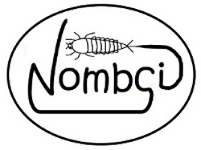
Project NoMBSI
(Non-lethal Method of Benthos Sampling and Identification)
Index NoASPT is intended to present ecological status of the watercourse in numerical form on the basis of the structure of macrobenthos,
sampled and analysed in accordance to the procedure NoMBSI.
Preliminary range values of the index calculated for different biocoenotic types of watercourse are based on the digital images analysed independently
by four researchers/. Values presented as "ModBMWP" are in fact values of BMWPpl index (Bis & Mikulec 2013), adapted and averaged as results of
different requirements for the levels of identification between both methods.
Animals found in samples should be identified with using the
Key.
The calculation of NoASPT values is very similar to the methods of calculation of ASPT index (Average Score Per Taxon) in BMWPpl procedure. Scores for particular taxa are presented in table 1. Average value should be calculated from summed values of ModBMWP of each taxa found in a sample. Taxa ocurred in a sample as 10-20 individuals should be counted twice and those occured as more than 20 individuals should be counted three times. Suggested, preliminary range of NoASPT index for III, IV and VI abiotic types and for different ecological states are presented in table 2.
| Acroloxus | 3 | Ephemerellidae | 7 | Perlidae | 8 |
| Aeschnidae | 5 | Ephemeridae | 8 | Perlodidae | 7 |
| Ametropodidae, Siphlonuridae | 7 | Ephydridae, Empididae | 6 | Phryganeidae | 5 |
| Ancylus | 8 | Erpobdellidae | 3 | Physidae | 3 |
| Aphelocheiridae | 7 | Gammaridae Pontogammaridae, Crangonyctidae | 6 | Piscicolidae | 6 |
| Argyroneta | 3 | Gerridae | 3 | Planorbidae | 4 |
| Asellidae | 2 | Glossiphonidae | 3 | Platycnemidae | 6 |
| Athericidae | 8 | Glossosomatidae | 10 | Pleidae | 5 |
| Baetidae | 6 | Goeridae | 9 | Polycentropodidae, Psychomyidae, Ecnomidae | 6 |
| Bithynia tentaculata | 6 | Gomphidae | 7 | Polychaeta | 5 |
| Blephariceridae | 10 | Gyrinidae | 5 | Polymitarcidae | 7 |
| Caenidae | 7 | Heptagenidae | 9 | Potamanthidae | 7 |
| Calopterygidae | 8 | Hirudinidae | 3 | Potamopyrgus antipodarum | 5 |
| Cambaridae Astacidae | 5 | Hydrachnidia | 3 | Ptychopteridae | 3 |
| Capniidae Leuctridae | 8 | Hydrometridae | 3 | Ryacophilidae | 7 |
| Ceratopogonidae | 4 | Hydropsychidae | 5 | Sciomyzidae, Muscidae, Dolichopodidae | 4 |
| Chaoboridae | 2 | Hydroptilidae | 6 | Sialis | 3 |
| Chironomidae | 2 | Isonychiidae, Oligoneuriidae | 8 | Simuliidae | 6 |
| Chloroperlidae | 8 | Lepidoptera | 2 | Sphaeriidae | 5 |
| Coenagrionidae | 6 | Lepidostomatidae, Brachycentridae, Beraeidae, Sericostomatidae, Odontoceridae | 6 | Stratiomyidae | 3 |
| Coleoptera imago | 3 | Leptoceridae | 10 | Syrphidae | 1 |
| Coleoptera larvae | 3 | Leptophlebiidae | 7 | Tabanidae | 3 |
| Cordulegasteridae | 9 | Lestidae | 5 | Taeniopterygidae, Nemouridae | 8 |
| Corduliidae, Libellulidae | 5 | Limnephilidae | 7 | Theodoxus | 6 |
| Corixidae | 5 | Lymnaeidae | 3 | Tipulidae, Limoniidae | 5 |
| Corophiidae | 6 | Molannidae | 10 | Tricladida | 3 |
| Culicidae | 2 | Naucoridae | 5 | Unionidae | 7 |
| Cyrenidae | 4 | Nepidae | 5 | Valvata | 4 |
| Dixidae | 3 | Notonectidae | 5 | Veliidae, Mesoveliidae, Hebridae | 5 |
| Dreissenidae | 7 | Oligochaeta | 1 | Viviparus | 6 |
(back to top of the page)
|
stan ekologiczny typ biocenotyczny |
I | II | III | IV | V |
| III | ? | >5,00 | ,99-4,30 | 4,29-3,80 | <3,80 |
| IV | ? | >5,50 | 5,49-4,10 | 4,09-3,50 | <3,50 |
| VI | ? | >5,50 | 5,49-5,20 | 5,19-4,00 | <4,00 |
(back to top of the page)

